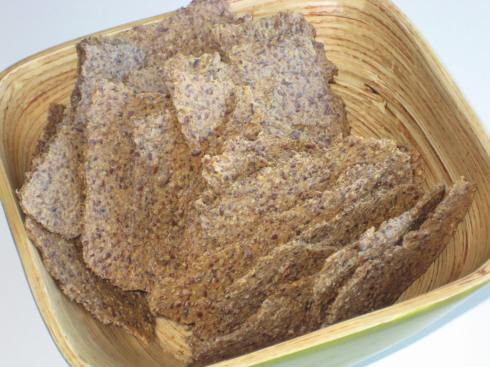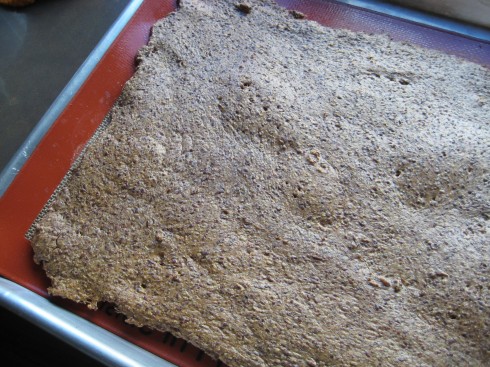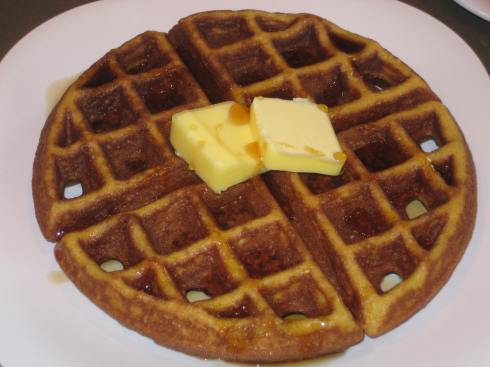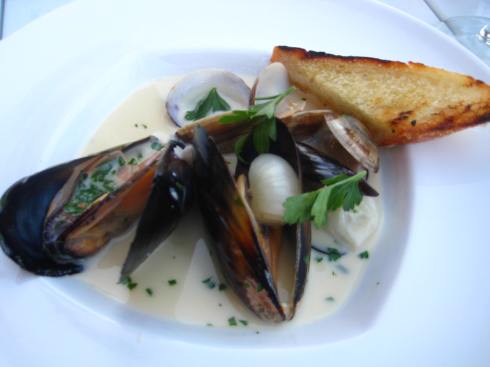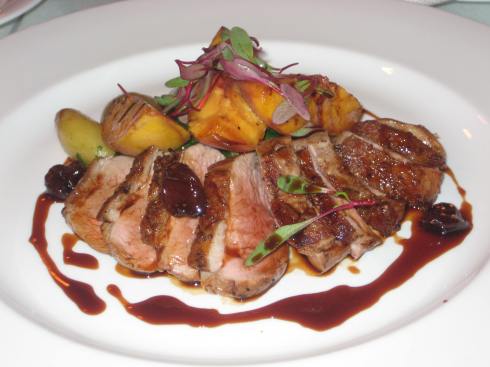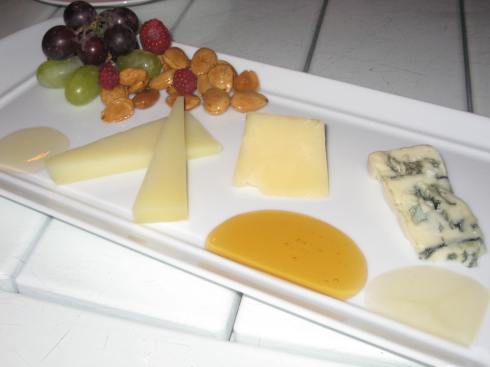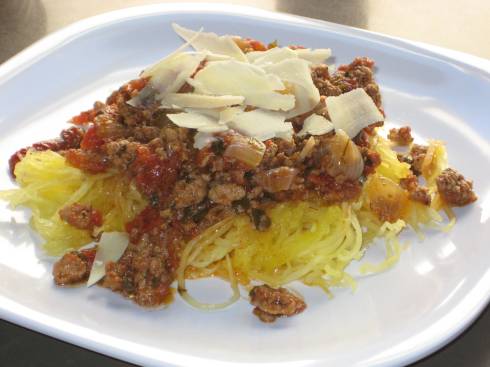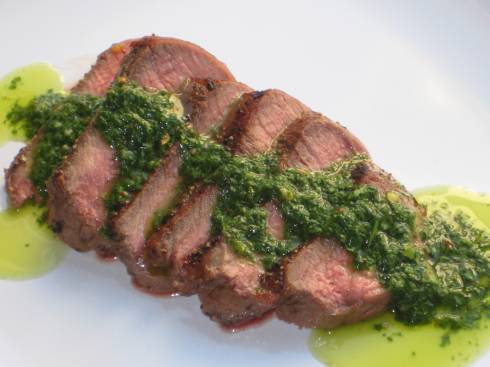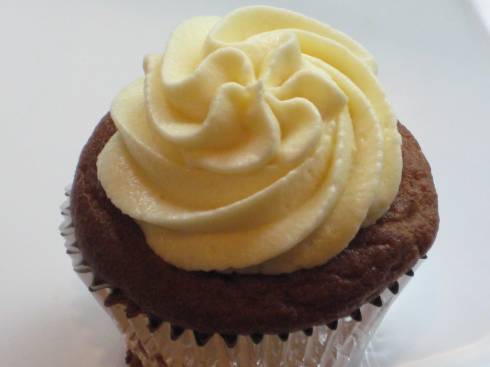You are currently browsing the monthly archive for September 2010.
Just because I’ve eliminated refined, white sugar from my diet doesn’t mean my wicked sweet tooth went away with it. Far from it. But I have learned to cook with some alternative sweeteners and to also enjoy more with less. For a good part of the time, I will reach for some fresh or dried fruit if I crave something sweet. And then the rest of the time, I just simply need something to make my teeth ache. There are so many options besides the bag of white cane sugar found in the baking aisle at the supermarket. I will focus on the ones I choose to use and the reasons why.
The sweetener in the white dish is coconut sugar.
A sweetener serves to do more than just lend sugary goodness to a recipe. It contributes to the bulk of the mixture, increase the moisture of the dish, and gives flavor to the end product. Sweeteners are used to carmelize food and build texture. These are all things to consider when you pick a sweetener for your next kitchen experiment.
In terms of liquid sweeteners, I use honey and maple syrup. Both have distinctive flavors and each has a unique nutrient profile. Honey has long been used by various cultures as a healing food. Unfiltered, raw, organic honey is full of enzymes, pollen, antioxidant, minerals and other as-of-yet unidentified substances. A quick search will yield more information and health benefits than I can adequately convey here. I use it when I need something sweet, floral, and viscous in a recipe. Additionally, honey acts as a humectant as it helps to retain moisture in, say, a baked good. One thing to watch out for when using honey is that it tends to burn, so you will need to adjust the cooking temperature and time.
Maple syrup is another one I like to use. It comes straight from the sugar maple tree and is very minimally processed. I buy grade B syrup which is darker in color, more concentrated in flavor and is supposed to have a higher mineral content than grade A syrup. None of that fake Aunt Jemima stuff here. In my opinion, maple syrup works well with recipes that have cocoa or chocolate. I use it about as much as I do honey when cooking. Because both are liquid, recipes may need to be adjusted accordingly, especially if you are converting one that uses granular sugar.
There is another popular liquid sweetener with a lot of buzz around it – agave nectar. It is touted to rank low on the glycemic index and is marketed as a natural sugar. I have used it before but because I am not convinced that it’s actually healthy, I refrain from cooking with it. I don’t go out of my way to avoid it altogether, though, as I do sometimes indulge in snacks that contain agave.
When I need a non-liquid sweetener, either because I need the granular properties or because I don’t want the flavors that honey or maple impart, I turn to coconut sugar and erythritol (brand: Zsweet). Coconut sugar is made from the nectar of the palm blossom that’s collected and crystallized. It is also lower on the glycemic index than white sugar or honey and looks similar to brown sugar, except the grains are slightly larger and more irregular. There is a caramelly flavor to coconut sugar that reminds me of toffee or butterscotch. I use it 1:1 in recipes but I don’t think it’s quite as sweet as regular sugar. Any batter or mixture with coconut sugar will look dark, so if you ever need a light colored cake, this may not be your sweetener.
The other granular sweetener in the photo is Zsweet which consists mostly of erythritol with some stevia and natural flavors. Erythritol is a sugar alcohol found in fruit and fermented foods. It’s not as sweet as sugar and is almost calorie-free. I often combine coconut sugar and Zsweet when I need the volume that the sugars provide in a recipe but don’t want the cooling effect or mint-like taste of erythritol to overwhelm the dish.
Lastly, I use stevia to sweeten many of my foods because only a tiny amount is needed for the job. The stevia plant has been used for centuries as a medicinal herb and gets its sweetening power from a compound called Rebaudioside A. Those tasting stevia for the first time will not find it as palatable as sugar because of its slight licorice taste or bitterness. I’ve tried several different brands that have done a good job of removing much if not all of the bitterness but there seems to be a threshold for aftertaste where after a certain amount, your drink or dish will have a much more pronounced licorice flavor. That’s why, like the erythritol, I usually combine it with another sweetener to balance the flavors. NuNaturals stevia (not pictured) along with the Trader Joe’s brand stevia are my preferred choices.
If you weren’t already familiar with some of the sweeteners I commonly use, I hope you’ve found something helpful. Drop me a line and let me know what you like to use to sweeten your food.
Now that it’s officially autumn, mother nature decides to throw a little heat wave at Southern California. I heard on the radio that temperatures in the L.A. area reached 113 degress F today – the highest ever since recording began in the 1890’s. It wasn’t quite that hot by the coast but we certainly got our share. It’s been so hot the last few days that frozen yogurt and popsicles all sound like good breakfast choices. I put my daughter down for a nap in nothing but her diaper and she still woke up sweaty. Ok, you probably get the picture.
I know that Starbucks has brought back their Pumpkin Spiced Lattes for the fall but that’s just not happening here. Ice water is thirst quenching but gets kinda boring some times. So I’ve been making grapefruit coolers to sip on and eat with our chips and salsa. It’s tangy, refreshing, and cools the palate.
Grapefruit Cooler
Makes 2-3 tall glasses
1 ruby grapefruit, juiced (about 6 ounces)
1 1/2 cups water
1/4 teaspoon stevia
- Combine fresh grapfruit juice, water, stevia and mix well.
- Pour over a very tall glass of ice. Insert straw and sip/guzzle!
It’s a Sunday afternoon, my daughter is napping, and I’m sipping a cold drink and munching on chips and salsa. Life is good.
In my nectarine salsa post, I mentioned that I was working on improving a flax chip recipe and I think I did it. Previous attempts at making a flax-based chip, like this one, although low-carb and grain-free, resulted in a flimsy chip that didn’t stand up well to a heavier dip. The chip would break apart in mid dip leaving the piece to get soggy and muddy the rest of the salsa or dip. The taste and texture also left something to be desired. For the flavor, I messed around with this recipe but it still wasn’t what I was aiming for. I wanted a chip that wasn’t bland but neutral enough to pair with any type of dip. The recipe also had to be quick and easy to make since I would be making it often and I’m short on time. After much tinkering, I made one simple addition and it was the one I needed – almond butter. The almond butter provides some much needed body and integrity while still letting it be light and crunchy enough to be a chip and not a cracker.
So without further ado, here it is.
Better Than A Corn Chip
Makes two cookie sheets worth
1 cup ground flax seeds
1 cup water
1/2 cup almond butter (I use salted)
1 to 2 teaspoons salt
- Preheat oven to 325 degrees F.
- Mix all the ingredients together. Mixture will look and feel gelatinous.
- Spread mixture on a silicone baking sheet or parchment paper to about 1/8 inch thickness.
- Bake for 10 to 12 minutes then flip the whole thing and bake for another 5 to 10 minutes. Chip will look dry when done.
- Cool completely before breaking into smaller pieces.
Since the chip mixture needs to be spread onto the cookie sheet, it doesn’t lend well to scoring before baking so I just break it apart after it’s done. I like the more rustic and organic feel of it anyhow. For a raw version, this chip can be dehydrated as well. Like a corn chip, I like this to be salted only, but you can season it however you fancy.
So there you have it, easy peasy flax chips that are ready for dipping. Enjoy!
On leisurely weekend mornings, I like to make a nice breakfast that feels a bit indulgent. Belgian waffles certainly feel that way to me so I was eager to try this special recipe from FreeCoconutRecipes.com. The waffles are made with cashew flour but since I didn’t have any, I took out the Cuisinart and made my own. Cashews are one of my favorite things to cook and eat. Contrary to popular belief, it is a seed from a drupe, and not a nut, that comes from the end of a cashew apple. It has a slightly sweet flavor and is higher in fat compared to other nuts. That high fat content, and creamy texture when blended, makes it a great ingredient to use in sauces and as a substitute for dairy.
I first made the waffles according to the recipe as written, minus the chocolate, and they were really delicious but also pretty dense. Half a waffle later and I was really full. Because I don’t make waffles too often, I like to make a bigger batch and freeze leftovers that can be toasted later on a busy morning. Even though the first batch I made was tasty, it didn’t toast as crisply as I would have liked, most likely due to the denser texture. So I made a few modifications and came up with a version that freezes well and toasts to crispy perfection.
Cashew Belgian Waffles
Makes 4 large round waffles
2 cups cashew flour
1/4 flax seed, ground
2 tablespoons organic raw honey
6 eggs
6 tablespoons coconut oil, melted
1/3 to 1/2 cup water
2 teaspoons vanilla extract
1/4 teaspoon salt
1 teaspoon baking soda
- Preheat and grease waffle iron
.
- Mix all ingredients together and let sit for a few minutes to thicken.
- Ladle just enough batter to almost cover the iron.
- Cook until golden brown.
Having honey in the batter makes the waffle brown fairly quickly. With my iron, it took no more than 2 minutes for the waffle to be done. I have also omitted the honey, using stevia instead, in another batch and the color wasn’t as dark and took about 3 minutes to cook. The fresh waffles will not be crispy first out of the iron – they’ll have more of a cakey texture. The crispy part comes when they have been frozen then toasted. Fill each little square pocket with butter and pure maple syrup and the heavens will open up and shine tasty happiness upon you. Ahhh… yum.
It’s a special occasion when my husband and I can dine out alone, especially since that hasn’t happened after our daughter was born a year and a half ago. So for my birthday, we made good use of the the gift card I got for Christmas from my lovely husband. Knowing how I die for a good massage, his gift to me originally was for a massage at the Montage in Laguna Beach. I’ve been overdue for a spa day for some time but I thought we could get more bang for our buck if we could both experience and enjoy it. So the babysitter was called, the reservation was made and the mommy and daddy were off to The Loft restaurant at the Montage.
We got there before sunset and it was a beautiful evening to dine outside. We had a table overlooking the resort grounds with a perfect view of the water. When I called ahead, the reservation staff assured me that the restaurant offers gluten-free options and that the wait staff and chef would be informed of our needs. That was again confirmed when we arrived and were seated. So I was a little surprised when a server brought a bread basket – a bread basket full of regular bread and GLUTEN. Not really a big problem since my husband was happy to indulge and I wasn’t planning on eating bread anyways. A few minutes later, though, this arrived.
The server realized that we got the wrong bread basket and switched it out for a gluten-free one. The GF bread assortment looked like GF sandwich bread with the crust removed and sliced into strips. I had a bite of each and thought it was a bite too many. The taste was bland and the bread was chewy but not in a good way. My husband enjoyed several more pieces while I tried to cleanse my palate with my drink – a Ciroc martini, up, no olives. Pretty in the candlelight, n’est-ce pas?
Next up was the steamed mussels and clams with cipollini onions in a chardonnay butter sauce. Yes, that was a regular crouton on the same plate but it was quickly removed. The mussels and clams were so fresh and the sauce was crazy good, I could have ladled it in my mouth.
For the next course, I had a stone fruit salad with nectarine, plum, arugala, and goat milk ricotta. The fruit and greens were great and very lightly dressed but I’m not a big fan of ricotta and this didn’t change my mind.
I then had the coriander-crusted duck breast. When ordering, it was between this and the restaurant’s signature dish of coffee-crusted New York strip. I was so tempted to order the steak but really wanted to taste something I don’t normally have. I love duck and this was a delicious dish. The duck was cooked to medium-rare and paired really well with the cherry mustard. It was served with grilled peaches and tiny little potatoes. Hubby had the halibut with port wine sauce and cleaned his plate.
For the dessert course, I chose a honey and cheese plate over my favorite and stand-by choice of creme brulee. I’m glad I did, if only for the chance to say that the resident fromagier came to meet us personally and explain the tasting and cheese choices. I decided on a blue, a sharp cheddar and a sheep’s milk cheese, which were paired with a local wildflower honey, a buckwheat honey and an acacia honey, respectively. My favorite of the pairs were by far the sheep’s milk cheese and the acacia honey. The cheese was semi-soft and creamy and the honey was very light in color and had a yummy floral flavor. Served with some fruit and nuts, it was a tasty alternative to a heavy dessert, like the apple pain perdu my husband had with maple ice cream. I may or may not have tried a spoonful of ice cream.
It was such a good meal, and mostly primal at that, that we left feeling very satisfied and so happy to have had a few hours off of parenting duty. We actually had time to speak to each other like adults, without interruption, about grown-up topics. Mom and dad definitely need to do this again. Maybe next time, I’ll get the massage first.
Spaghetti and I have a history together. As a kid, I loved to eat spaghetti. I loved to twirl the noodles around my fork or slurp it a la “Lady and the Tramp”. I didn’t care that my mom added soy sauce to the marinara or that the cheese came from a green shaker can. It was fun to eat. Then when I got older and was in school, it was a quick food to make and was easy on the grocery bill. Those frequent quick and easy meals led to the freshman 15 and the sophomore who-knows-how-many. Once the Atkins diet and low-carb meals became popular, I said goodbye to my spaghetti as I prepared to fit into my wedding dress.
Now we’ve reunited and spaghetti is once again part of my culinary circle. I’ve figured out I can have my spaghetti without the pasta thanks to a very aptly named gourd – spaghetti squash. It’s as if mother nature knew that there would be those who love Italian but not wheat and provided the perfect solution. Once cooked, the spaghetti squash is ready to carry any sauce with its long strands. It is so simple to prepare, you’ll wish you switched your semolina for squash ages ago.
The easiest way to cook spaghetti or any other squash (acorn, pumpkin, etc.), is to roast it whole. I learned this tip from The Spunky Coconut Cookbook: Gluten Free, Casein Free, Sugar Free (page 59, How to Cook a Pumpkin or Squash). There are step-by-step instructions and photos and it’s hard to mess up. You skip all the work needed to cut into a hard gourd not to mention that squashy residue that doesn’t want to wash off your hands. Just stick it in the oven and once it’s brown and soft, the squash can be peeled and seeded. In case you don’t have the cookbook, here are some instructions.
Roasting a Whole Spaghetti Squash
- Preheat oven to 350 to 400 degrees F.
- Place a clean squash, uncut, in a baking dish or roasting pan.
- Bake for an hour or more depending on the size of the squash. The skin will turn brown and slightly puffy.
- Let squash cool before peeling. Cut in half and remove the seeds.
- Use a fork to scrape and separate the strands.
My small to medium spaghetti squash was cooked at 350 degrees F for about an hour and ten minutes. Once it was done, this is what I had.
The spaghetti squash is tender but has enough bite to simulate an al dente texture. It makes a great bed for your favorite sauce and meatballs. This is how we enjoy spaghetti now and my daughter is learning how to twirl it around her fork. Then she throws the fork aside and digs in with both hands.
What will you put on your spaghetti squash?
Steak makes a regular appearance at our dinner table. It requires little preparation and with my husband doing the cooking on the grill, I am spared to do other leisurely things – enjoy a glass of wine, flip through a glossy magazine or, most likely, pick up the toys and sippy cups strewn about the floor for the nth time.
In choosing a cut, I usually favor rib eye for the flavor and the fat but we also like flat iron as it’s quite tender. Last night, I made a chimichurri sauce to go with our steaks. The sauce is zingy and fresh and pairs really well with not only grilled beef but chicken as well. An authentic Argentinian recipe calls for parsley to be used in chimichurri but I have used cilantro with fantastic results. If you like garlic, this is the sauce for you.
Chimichurri with Grilled Rib Eye
2 rib eye steaks
1/4 cup worcestershire sauce
salt & pepper
1 bunch parsley, chopped
1 tablespoon fresh orgeno, chopped
6 garlic cloves, chopped
3/4 cup olive oil
1/4 cup red wine vinegar
1 teaspoon red pepper flakes
2 teaspoons salt
1 teaspoon black pepper
- Marinate steaks in worcestershire and sprinkle with salt and pepper. Let sit for 30 minutes then grill to your liking (medium rare for me).
- Whisk together all ingredients for sauce and serve along side steaks.
- Store any unused sauce in the refrigerator.
The sauce is best prepared by chopping the garlic and herbs by hand. A blender can be used but be sure not to blitz it for too long otherwise it will all look like green soup.

Fans of the the Primal Blueprint and Mark’s Daily Apple get ready! The Primal Blueprint 30-Day Challenge has officially begun. If you are a primal eater, then the contest prize of – wait for it – a WHOLE grass-fed cow will excite you to no end. If you haven’t been introduced to MDA yet, head over there and check out the primal principles as well as details of the Challenge. Do something for your health and start today.
I was so excited when I found Girl Gone Primal’s granola. It meant that I would be eating cereal again. More importantly, my husband would be eating cereal again. When it comes to breakfast, my husband has to eat the second he rises from bed. Naturally, cold cereal was his go-to food, until I had to go all primal on his diet. But hooray for grainless granola! This is super easy to whip up and many a family member has requested this tasty cereal/snack. No one seems to miss the oats.
Nutty Granola
Makes 9 – 10 cups
1 cup walnuts, chopped
1 cup cashews, chopped
1 1/2 cups sliced almonds
1 cup pepitas
1/2 cup sunflower seeds
1 tablespoon cinnamon
1/2 teaspoon salt
1 egg white
1/4 to 1/3 cup maple syrup
1 teaspoon vanilla extract
1 cup raisins
1 cup banana chips, chopped
- Preheat oven to 300 degrees F.
- Whip egg whites until frothy, then mix in maple syrup and vanilla.
- Toss nuts with cinnamon and salt.
- Combine egg mixture and nuts and coat thoroughly.
- Spread nuts on 2 lined cookie sheets and bake for 25 minutes.
- Let cool completely then break apart. Add the raisins and banana chips.
- Store in an air tight container for up to 2 weeks.
The ingredients I have listed are the ones I use the most, but I have also made the granola with pistachios, macadamia nuts, pecans, pine nuts, shredded coconut, dried cranberries and blueberries. The possibilities for add-ins are limitless. You can also adjust the amount of sweetness if you use a lot more of the dried fruits. For an eggless version, dates pureed with a bit of water can be used to bind the nuts but it will require a longer cooking time.
This is a quick breakfast alternative to bacon and eggs and will satisfy the craving for something crunchy in milk. Truthfully, though, I like it best by the handful. And, sometimes, when no one else is looking, I’ll throw in some dark chocolate pieces and call it desert.
Being Chinese, tea drinking is big in my culture. You drink it boiling hot, strong and straight up. No sugar, no milk – just tea leaves and burn-your-tongue hot water. So when I tried chai for the first time, I hated it. Sure, I used to drink coffee with a ton of cream and would let the white sugar pour into the cup, but milk in tea is just wrong. Even when the whole boba milk tea craze was in full swing, I just couldn’t get into it. Every time I tried it, I thought, maybe this time it’ll taste better. Nope, still don’t like it.
I do like spices, though, and, strangely, love the heady scent of hot chai so I went searching for the same flavors in a different form. And what I found was this. Could I actually like chai? In a cake?
Heck, yeah!
So once I had a recipe to start with, I picked it apart and came up with a version that didn’t include wheat or refined sugar. This grain-free, gluten-free chai cake is spongy, fragrant and delicious.
Chai Cake
Makes one 8 x 8 square cake or 12 cupcakes
3/4 cup coconut milk, full fat
3 chai tea bags (I used rooibos chai tea)
6 eggs
1/4 cup coconut oil, melted
1/4 to 1/3 cup honey
1/2 teaspoon stevia
2 teaspoons vanilla extract
1 teaspoon apple cider vinegar
3/4 cup almond flour
1/2 cup coconut flour
3/4 teaspoon cinnamon
1/2 teaspoon ground cardamom
1/2 teaspoon salt
1 1/2 teaspoons baking soda
- Preheat oven to 325 degrees F. Grease or line cake or muffin pan.
- Steep tea bags in coconut milk over low heat for 5 – 10 minutes.
- Mix wet ingredients together. Slowly add tea infused coconut milk.
- Mix dry ingredients together. Combine wet and dry ingredients thoroughly.
- Pour into prepared pan and bake for 25 minutes for 8 x 8 cake or 18 minutes for cupcakes. Because honey tends to burn, check the cake periodically and adjust the temperature as necessary.
For me, this cake is sweet enough on its own and I don’t normally use frosting. But I made it over the weekend for my cousin Emma’s baby shower (she’s having a boy next month, yay!!!) and wanted to dress it up for the special occasion. The honey ginger cream was a perfect fit. Unlike the original recipe, this version of the frosting lacks the powdered sugar so it will be much softer and will need to be refrigerated if you are not eating it right away.
Honey Ginger Cream
8 ounces cream cheese, room temperature
8 tablespoons unsalted butter, room temperature
1/4 cup raw honey
1/2 teaspoon stevia
1/2 teaspoon of fresh ginger, grated
- Combine everything and beat until smooth.
- Frost after cake has completely cooled.
Final verdict: chai tea = yucky, chai cake = yummy!



